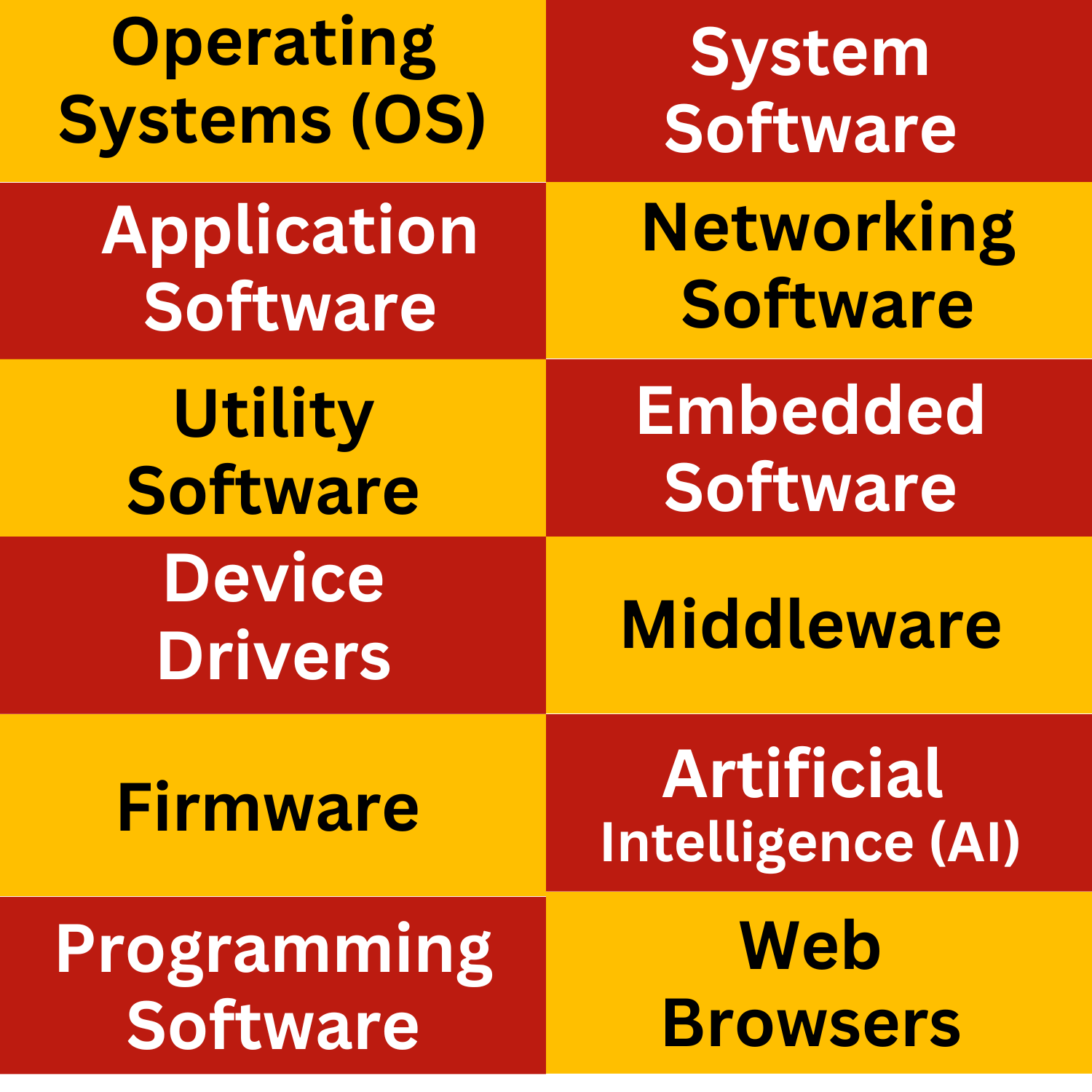Navigating the Digital Landscape: A Guide to Types of Software

Introduction:
Software forms the center of life in the wide and flowing prow of technology; the dominating operating systems and mainly also the other applications giving their existence to those very specialized needs, the varieties of software are almost as numerous as the tasks. Here, we fly towards solving the ends of the various forms of software, unveiling their functionality to the impact that they have within our own digital world.
- Operating Systems (OS):
Every computing device has as its basis an operating system. Examples: Windows, macOS, Linux, and Android. All these offer the foundation on hardware interaction, resources management, and giving the users the facility to run applications. - Application Software:
The category which has been included here contains a wide range of software applications developed for a specific user purpose. This category includes productivity software, such as word processors (Microsoft Word, Google Docs); spreadsheets (Microsoft Excel, Google Sheets); and tools for presentations (Microsoft PowerPoint, Google Slides). It also includes creative applications, such as Adobe Photoshop, video editing software, and 3D modeling. - Utility Software:
Utility software serves to enhance the performance and maintenance of a computer system. Antivirus programs, disk cleaners, and backup tools are examples of utility software that ensure the security, cleanliness, and integrity of data on a device. - Device Drivers:
Device drivers are specialized software that enables communication between the operating system and hardware components. They are essential for proper functioning of peripherals such as printers, graphics cards, and sound cards. - Firmware:
Firmware is a type of software embedded in hardware, providing low-level control for the device. It is commonly found in devices like routers, printers, and digital cameras. Firmware updates are crucial for improving functionality and security. - Programming Software:
For those in the world of software development, programming software is indispensable. Integrated Development Environments (IDEs) like Visual Studio, Eclipse, and JetBrains IntelliJ IDEA provide a comprehensive suite of tools for writing, testing, and debugging code. - System Software:
System software includes programs that manage and control the basic functions of a computer system. This includes the operating system, as well as software that facilitates communication between hardware components, such as device drivers and firmware. - Network Software:
Networking software enables communication between computers and devices within a network. This includes protocols like TCP/IP, firewalls, and network management tools that help maintain and optimize network performance. - Embedded Software:
Embedded software is specifically designed to operate within embedded systems, which are dedicated computing devices with a specific function. Examples include software in household appliances, automotive systems, and medical devices. - Middleware:
Middleware acts as an intermediary layer between different software applications, allowing them to communicate and share data. It plays a crucial role in integrating diverse systems and enabling seamless information flow. - Artificial Intelligence (AI) Software:
With the rise of AI, specialized software has emerged to facilitate machine learning, natural language processing, and other AI applications. TensorFlow, PyTorch, and natural language processing libraries are examples of AI software. - Web Browsers:
Web browsers are a category of software that enables users to access and interact with content on the World Wide Web. Examples include Google Chrome, Mozilla Firefox, Safari, and Microsoft Edge.
Conclusion:
As we navigate the digital landscape, understanding the different types of software becomes paramount. Each category plays a distinct role in shaping our digital experiences, from the seamless operation of our devices to the diverse applications that enhance productivity, creativity, and connectivity. In this age of technological evolution, a comprehensive awareness of software types empowers us to make informed choices and harness the full potential of the digital world.







